![]()
![]()
![]()
Use LEFT and RIGHT arrow keys to navigate between flashcards;
Use UP and DOWN arrow keys to flip the card;
H to show hint;
A reads text to speech;
18 Cards in this Set
- Front
- Back
|
Normal (ideal) occlusion-
|
Maxillary teeth slightly overlap mandibular teeth on the facial surfaces.
|
|
|
Malocclusion-
|
Any deviation from the Normal (ideal) occlusion
|
|
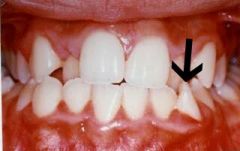
Labioversion
|
A tooth that has assumed a position labial to normal.
|
|
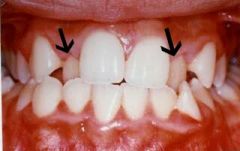
Linguoversion
|
A tooth that has assumed a position lingual to normal.
|
|
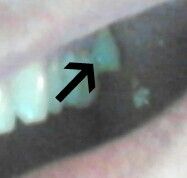
Buccoversion
|
A tooth that has assumed a position buccal to normal.
|
|
|
Supraversion
|
A tooth that has assumed a position that is elongated above the line of the occlusion.
|
|
|
Infraversion
|
A tooth that has assumed a position that is depressed below the line of the occlusion.
Ex: Primary tooth submerged or ankylosed. |
|
|
Torsiversion
|
A tooth that has assumed a position that is turned or rotated.
|
|
|
Mesognathic
|
Has slightly protruded jaws, which give the facial outline a relatively flat appearance (straight profile).
|
|
|
Retrognathic
|
Has prominent maxilla and a mandible posterior to its normal relationship (convex profile).
|
|
|
Prognathic
|
Has prominent, protruded mandible and normal (usually) maxilla (concave profile).
|
|
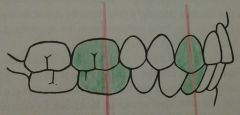
Angles Classification
Normal (ideal) occlusion |
Facial Profile is Mesognathic
Molar Relation: Mesiobuccal cusp of the maxillary first permanent molar OCCLUDES with the buccal grove of the mandibular first permanent molar. Canine Relation: Maxillary permanent canine OCCLUDES with the distal half of the mandibular canine AND the mesial half of the mandibular first premolar. |
|
|
MALOCCLUSION
|
Class I: Neutroclusion
Class II: Distoclusion *Division I *Division II Class III: Mesioclusion |
|
|
Class I Malocclusion
|
Facial Profile: Same as normal occlusion
Molar Relation: Same as normal occlusion Canine relation: Same as normal occlusion **Malposition of individual teeth or groups of teeth Examples: Crowded max or mand anterior teeth Protruded or retruded max incisors Anterior & posterior cross bite |
|
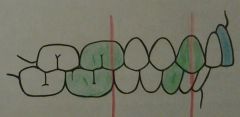
Class II: Distoclusion Maloclussion
|
Mandibular teeth posterior to normal position in their relation to the maxillary teeth.
Facial Profile: Retrognathic Molar Relation: Buccal groove of mandibular first molar is distal to the mesiobuccal cusp of the maxillary first molar by at least the width of a premolar Canine Relation: Distal surface of mandibular canine is distal to the mesial surface of the maxillary canine by at least a width of a premolar. |
|
|
Class II, Division 1 Maloclussion
(All incisors are protruded) |
Mandible is retruded and all maxillary incisors are PROTRUDED.
Examples: Deep Overbite, Excessive Overjet, short mandible, short upper lip |
|
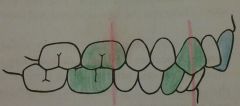
Class II, Division 2 Malocclusion
(Mandible retruded & one or more incisors are retruded) |
Mandible is retruded, and one or more maxillary incisors are RETRUDED.
|
|
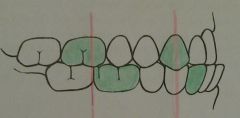
Class III Maloclussion
(Anterior to Normal position in relation to the maxillary) |
Mandibular teeth are anterior to normal position in relation to the maxillary teeth.
Facial Profile: Prognathic Molar Relation: Buccal groove of Mandibular first molar is Mesial to mesiobuccal cusp of the maxillary first molar by at least the width of a premolar. Canine Relation: Distal surface of the mandibular canine is mesial to the mesial surface of the maxillary canine by at least the width of a premolar. |

